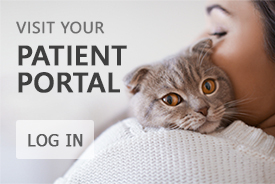Health Tips For Handling Cat Litter Boxes

Several surveys indicate that cats are the most popular pet in the United States. Feline popularity is most certainly due to several factors; easy to care for, inexpensive to own, few health risk and complications associated with ownership, and last but not least, they are extremely lovable. However, despite these factors, there are some health risks, which can be attributed for the most part to the litter box. In order to keep these risks as small as possible, it is important to follow some simple but important guidelines when you have an indoor cat that utilizes a litter box, both for the health of you and your beloved cat.
LITTER BOX HEALTH RISKS
Toxoplasmosis – an infection caused by the same parasite (Toxoplasma gondii) found in raw or undercooked meat, unwashed vegetables and where cat feces is found – either outside in soil or indoors in a litter box. This disease is experienced by most people without them ever even knowing it, because the symptoms are subtle. However, individuals such as pregnant women and people with weak immune systems can experience serious health problems and a have a greater risk of infection.
- Symptoms: swollen glands, fever, headache, muscle pain, stiff neck.
- Additional symptoms for high risk group*: damage to brain, eyes and internal organs
*It has been reported that children born to pregnant women infected can experience blindness, hearing loss, mental retardation, and brain or eye problems as they grow and develop.
Toxoplasmosis is contracted by accidentally ingesting the Toxoplasma gondii parasite infected cat feces, after cleaning a cat box, or even working outside in a garden or flower bed where cat feces was left. This sounds disgusting, and avoidable, but surprisingly happens more often than you would think. In actuality, handling anything that has come in contact with cat feces can give you the infection.
Tips to Avoid Toxoplasmosis Infection:
- Wash hands thoroughly with soap and water (just rinsing them with water is not completely effective) after cleaning the cat box, and/or handling the tools used to do so.
- High risk individuals should avoid cleaning the cat box. Let someone else take care of that task.
- When available or possible, use disposable gloves to clean the litter box and area around it; making sure you STILL wash your hands thoroughly afterwards. Always using gloves when gardening is just as important as using them indoors for the cat box.
- Clean the litter box daily. Toxoplasmo gondii does not become infectious until 1-to-5 day after the feces is in the litter box.
- If you have small children and a sandbox play area outdoors, make sure you keep it covered when it is not being used.
- Do not feed your cat raw meat, as it could increase the chances of them contracting the parasite.
- Keep indoor cats indoors.
- Avoid stray cats, and be extremely cautious of bringing outdoor cats into the home, as they could be carriers of the Toxoplasmo gondii parasite.
Escherichia coli – also known as E. coli, infects humans in much the same way Toxoplasmosis does: through contact with feline feces and by ingesting raw or undercooked meats. Once infected, this bacteria lives in the intestinal tract. Although most of the more common strains manifest themselves with relatively mild symptoms, there are a few strains that are more severe, causing serious illness.
- Symptoms: abdominal pain or cramps, diarrhea
- Additional symptoms*: kidney failure
*in very young children under the age of 5.
An E coli infection is easy to prevent using the same precautions and safety tips for Toxoplasmosis. It is important to know that this bacteria is not only a threat to humans, but can also put your cat’s health at risk. If a cat uses a dirty litter box, it can contract the infection by licking it’s dirty paws which stepped on feces where E coli parasites live. Generally, this infection will manifest itself as a UTI (urinary tract infection) in your cat, which your veterinarian will diagnose through a urine sample and blood test, and treat with antibiotics. Your cat will recover, but in an elderly feline, or cat with other health issues, this could be far more serious.
IMPORTANT INFORMATION ABOUT CAT LITTER:
Along with the health risks a dirty litter box poses to both you and your cat, it is important to know that there are risks associated with the various types of litter you use in your cat’s litter box. The two types of cat litter are clumping and non-clumping; both of which have their pros and cons.
Clumping Litter
Advantages:
- Absorbs moisture quickly and more thoroughly than conventional litter
- Clumps both urine and feces into a single mass, so it is more easily removed from the box
- Usually scented, so it reduces odors and smells the best (most of them are scented)
Disadvantages:
- Unfortunately, this type of litter can be dangerous for your cat because of the chemicals it contains to help it “clump” and absorb moisture. Clumping litter usually contains sodium bentonite, a mineral which may be harmful to your cat or even fatal to your kitten if ingested.
- Because this type seems to be the most convenient to use because of how easy it is to gather the dirty contents from the litter box; owners often get lazy with cleaning the box and do not disinfect and sanitize the box often enough. (Remember, complete replacement of litter still needs to be done, just not as frequently)
This does not mean you cannot use clumping litter, it is just better to use a brand which is non-clay based. Check the ingredients label on your clumping cat litter, and of course ask your veterinarian which brands they recommend. Three brands which are safe, non-toxic, and non-clay are: Swheat Scoop, World’s Best Cat Litter and Littermaid.
Non-clumping Litter
Advantages:
- Costs less than the clumping types (both clay and non-clay versions)
- Non-toxic to your cat or kitten
Disadvantages:
- Does not absorb moisture or clump urine and feces like clumping litters do
- Makes it more difficult to keep the litter box clean and requires more work to remove all dirty contents from the litter.
- It is important to sanitize and disinfect the litter box itself more frequently, along with scooping the dirty contents out of the box. Wash the box thoroughly and completely and replace the litter once a week.
AUTOMATIC AND SELF-CLEANING LITTER BOXES
Just as important as the litter you use in your cat’s litter box is the type of litter box you choose. For safety reasons, you may want to consider some of the possible hazards of self-cleaning and automatic litter boxes, which clean the box automatically after your cat has used it. The litter is cleaned by a mechanism that rakes or sweeps the litter and retrieves the waste and places it into a compartment where it is kept away from the cleaned litter. Because these boxes have mechanical parts, they can be dangerous around small children. Place these boxes in an area easily accessible to your cat, but away from areas accessible to small children. Another thing to remember is that these automated litter boxes have built in sensors to alert them when a cat is utilizing the box, so that it does not function until the cat has exited. However, because this is a mechanical item, malfunctions can occur, posing a potential danger to your cat. If you are concerned with this risk, you can place most versions in a “manual mode” and simply start the cleaning cycle yourself when the cat exits the box. Manual mode is also recommended by manufacturers for small cats under 5 lbs. Automated and self-cleaning litter boxes are safe, you just need to be aware of “potential” dangers and exercise care when using them.
The post Health Tips For Handling Cat Litter Boxes appeared first on Pet Assure Blog.
 Posted by dvmgalaxy
Posted by dvmgalaxy- Posted in Uncategorized
 Dec, 06, 2017
Dec, 06, 2017 Comments Off on Health Tips For Handling Cat Litter Boxes
Comments Off on Health Tips For Handling Cat Litter Boxes

 (770) 545-8077 | Fax: (770) 450-8573
(770) 545-8077 | Fax: (770) 450-8573


